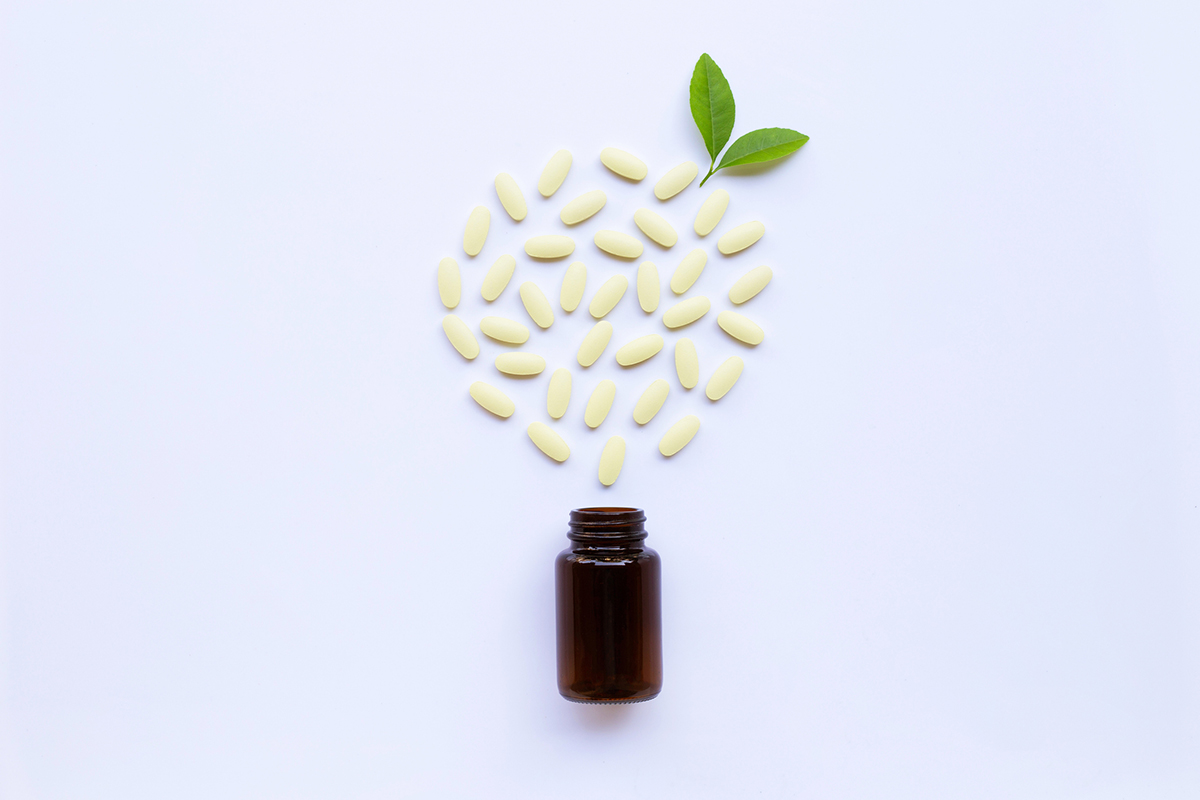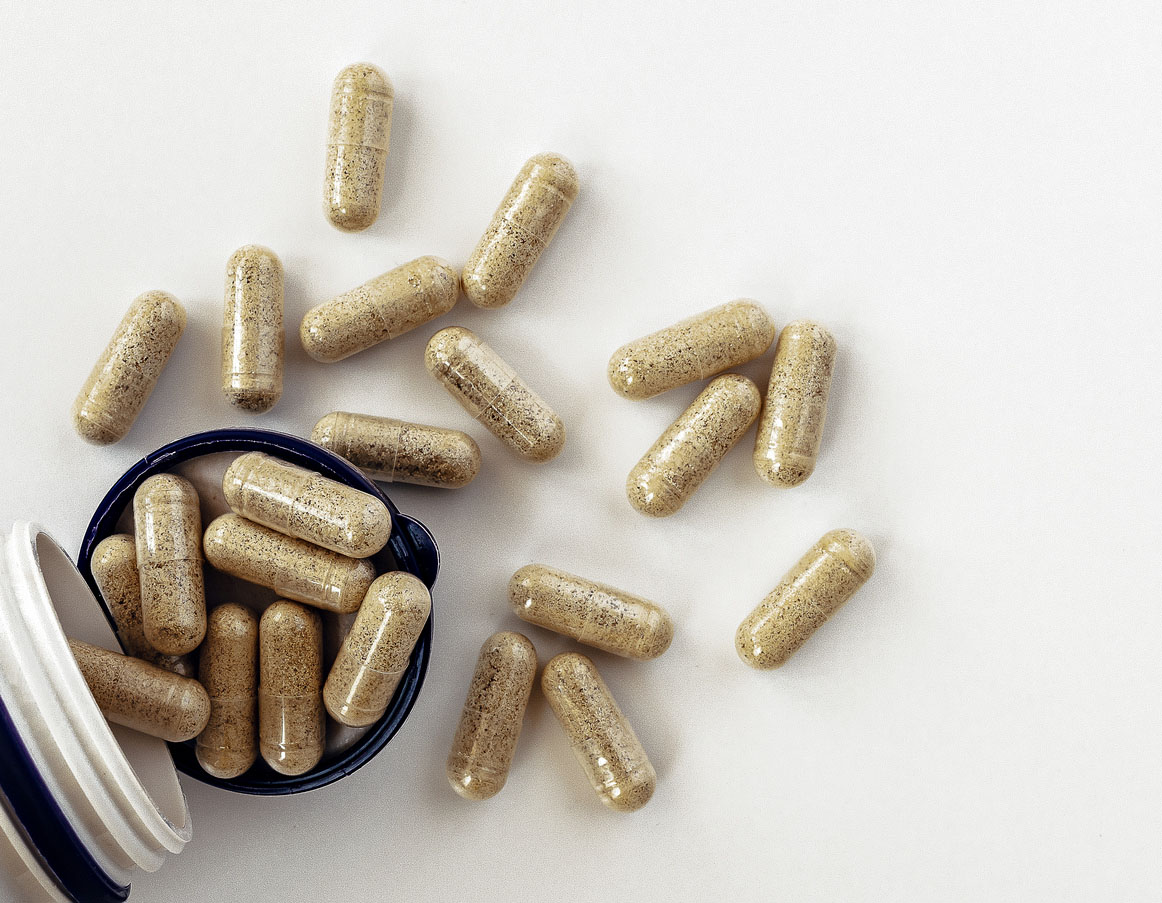I always keep my eyes open for the latest exciting research to share with my Intelligent Medicine audience. Here are a few supplements that are on my radar lately, and should be on yours as well!
PEA: Palmitoylethanolamide (not to be confused with phenylethylamine, the PEA that gives chocolate its feel-good “limerance” properties) is an endocannabinoid-like compound with extensively-documented anti-inflammatory, neuroprotective, and pain-relieving properties. According to a 2021 review:
“PEA’s actions on multiple molecular targets while modulating multiple inflammatory mediators provide therapeutic benefits in many applications, including immunity, brain health, allergy, pain modulation, joint health, sleep and recovery. PEA’s poor oral bioavailability, a major obstacle in early research, has been overcome by advanced delivery systems now licensed as food supplements.”
PEA’s chief asset is that it can modulate pain without inducing sedation, mental impairment, GI bleeding, liver or kidney toxicity, or dependency. A recent meta-analysis concluded:
“PEA was found to reduce pain scores relative to comparators in a pooled estimate . . . Several studies reported additional benefits of PEA for quality of life and functional status, and no major side effects were attributed to PEA in any study. The results of this systematic review and meta-analysis suggest that PEA is an effective and well-tolerated treatment for chronic pain.”
Research suggests PEA may be useful for alleviating fibromyalgia, arthritis, back and menstrual pain. I use it to reduce delayed onset muscle soreness (DOMS) from exercise. It’s also touted for its potential as an immunomodulator vs. viral and other pathogens.
PEA is available as Levagen®️ in a variety of supplements, alone or in combination with other natural anti-inflammatories and analgesics. I take PEA in the form of PlusCBD Relief, where it’s teamed with CBD and CBDA.
SPMs: Their name vividly describes their function—specific pro-resolving mediators—and derives from their pleiotropism, a medical term that’s applied to a compound with “Swiss army knife” impacts on a wide gamut of biochemical pathways.
Resolvins are synthesized in the body to put the brakes on runaway inflammation, hence their versatility. They promote healing, alleviate pain, and slow degenerative processes. BigPharma has targeted resolvins as an opportunity for lucrative drug development—so far without success.
That’s because it’s hard to improve on Mother Nature. SPMs are byproducts of the Omega-3 fatty acids we consume—mostly EPA and DHA, although, to some extent, even the much-maligned Omega-6 arachidonic acid (AA). Think of SPMs as the “business-end” of the polyunsaturated fatty acids we consume, further along the bio-synthesis pathway toward body-ready utilization by cells, organs and tissues.
A comprehensive review explored the potential of SPMs for stroke recovery, MS, neurodegenerative disease, and infections. It concluded:“It is likely that the clinical use of SPMs will not be as potent as that of anti-inflammatory drugs, but their action is likely more physiological, and it could probably be better tolerated by patients. In addition, their effects could be potentiated by the synergic action of other ‘natural’ approaches to the control of chronic low-grade inflammation, such as those based on nutrition and lifestyle.”
A 2024 review evaluated the potential of SPMs for cardiovascular disease:
“SPMs are protective in animal models of cardiovascular disease including atherosclerosis, myocardial infarction and heart failure . . . Clinical trials are needed to rigorously test whether increasing SPMs in humans can prevent atherosclerosis progression, reduce cardiovascular risk and promote cardioprotection.”
“Inflammaging” is now an acknowledged constraint on longevity, so I’ve added SPMs to my personal preventive regimen. For those with obvious inflammatory issues—autoimmunity, neurodegenerative disease, metabolic syndrome/diabetes, cardiovascular disease, chronic infections, injury recovery—it’s advisable to add SPMs to usual Omega-3 supplementation.
Nicotinamide Riboside: Nicotinamide adenine dinucleotide (NAD+) is an essential energy compound. A recent review summarized its relationship to aging:
“NAD+ can directly and indirectly influence many key cellular functions, including metabolic pathways, DNA repair, chromatin remodeling, cellular senescence and immune cell function. These cellular processes and functions are critical for maintaining tissue and metabolic homeostasis and for healthy aging. Remarkably, aging is accompanied by a gradual decline in tissue and cellular NAD+ levels in multiple model organisms, including rodents and humans. This decline in NAD+ levels is linked causally to numerous aging-associated diseases, including cognitive decline, cancer, metabolic disease, sarcopenia and frailty.”
Okay, NAD+, you had me at hello!
The question hinges on whether we can replenish NAD+ via a supplement. And studies appear to favor that notion: ordinary vitamin B3 in the form of niacin appears to raise blood and muscle levels of NAD+; so, too, to even a greater degree, may pricier precursors of NAD+ like nicotinamide mononucleotide (NMN) and nicotinamide riboside (NR).
But questions remain:
- Is the additional cost of supplements like NMN and NR warranted—do they outperform niacin as an NAD+ precursor?
- Do higher blood or muscle levels of NAD+ achieved by supplementation impact mitochondrial performance? Some claim extra-cellular levels don’t reflect intracellular availability. For example, one study found that “Nicotinamide riboside does not alter mitochondrial respiration, content or morphology in skeletal muscle from obese and insulin-resistant men”.
- And even if the stuff can get into cells’ respiratory machinery, so what? Will that impact performance, or alter parameters associated with aging or disease?
- Even if academic studies show anti-aging, disease-fighting or performance enhancing effects of NR or NMN, can small, practical, affordable doses replicate those benefits for the average person?
- Finally, if so, which is better: NR or NMN?
To some extent these questions remain unresolved, and bitter controversy rages over whether to take niacin, NR, or NMN, or, indeed if they work at all. The research itself may be tainted by commercial interests trying to promote one or another lucrative product.
But this latest study reinforces my belief that NR is a good bet. A Science Daily article with the intriguing title “Over-the-counter supplement improves walking for peripheral artery disease patients”reports:
“In a preliminary, randomized, double-blind clinical trial led by Northwestern University and University of Florida scientists, patients who took nicotinamide riboside daily for six months increased their timed walking distance by more than 57 feet.”
Peripheral artery disease (PAD), also called claudication, is a form of mitochondrial energy “brownout”. Deprived of adequate oxygen due to impaired circulation, muscle cells weaken and send distress signals in the form of pain with minimal exertion. The demonstration that feeding sufferers of PAD nicotinamide riboside improved their walking distance strongly suggests that something—perhaps rescue of overtaxed mitochondria—was powering them up.
Unlike some studies where a compound is given IV, or in monumental doses that would choke a horse or be cost-prohibitive, the doses of NR used were attainable by usual oral supplementation—1000 mg daily. In fact, that’s what I take every morning: two capsules of 500 mg TruNiagen.
I’m closely following the research on NR, which is currently outperforming that on NMN, and I’m keeping an open mind. I’m not yet deterred by the doubters.
(Learn about FDA’s effort to quash access to NMN here.)
Urolithin A: Pomegranates have long been recognized for their health benefits; hearken back to those tongue-in-cheek ads for Pom Wonderful (“Defeat Death!”). Lately, a new derivative of pomegranates has been discovered: Urolithin A. Urolithins are derived from ellagitannins in pomegranates, but their production is dependent on fermentation by the right flora in the gut. Most people are incapable of the biotransformation by virtue of a deficient microbiome.
Hence the rationale for delivering body-ready urolithins in the form of supplements. Urolithin A first grabbed my attention a couple of years ago when it was the subject of a study in the prestigious journal Naturetitled “Urolithin A improves muscle strength, exercise performance, and biomarkers of mitochondrial health in a randomized trial in middle-aged adults”:
“The new study builds on findings from previously reported trials with UA in older adults that demonstrated both the biological impact of UA on mitochondrial health in skeletal muscle and an improvement in muscle endurance and resistance to fatigue with long-term UA supplementation.”
While the emphasis has been on enhancing physical performance and forestalling age-related muscle decline, a recent study highlights yet another dividend of the mitochondrial support conferred by Urolithin A:
“Long-term urolithin A (UA) treatment improved learning, memory, and olfactory function in Alzheimer’s disease (AD) mice.”
And because of the ubiquity of mitochondrial energetics in human physiology, it follows that Urolithin A may have potential in supporting immunity. Indeed, a recent study found:
“Oral UA administration to tumor-bearing mice conferred strong anti-tumor CD8+ T cell immunity . . . the well-tolerated metabolic compound UA represents an attractive option to improve immune therapy.”
Immunosenescence afflicts us as we age. Italian researchers discovered:
“The aging process is often accompanied by a decline in the proper functioning of the hematopoietic and immune systems, making older adults more susceptible to infections, blood disorders, and even tumor development. By introducing a natural compound called Urolithin A, which targets mitochondria – the energy powerhouses of cells – they were able to reverse the decline in HSC (hematopoietic stem cell) function.”
NOTE: I’m happy to report that we’ve begun to partner with Timeline, makers of the Urolithin A supplement Mitopure™️, to communicate the benefits of this exciting supplement to our Intelligent Medicine community.







